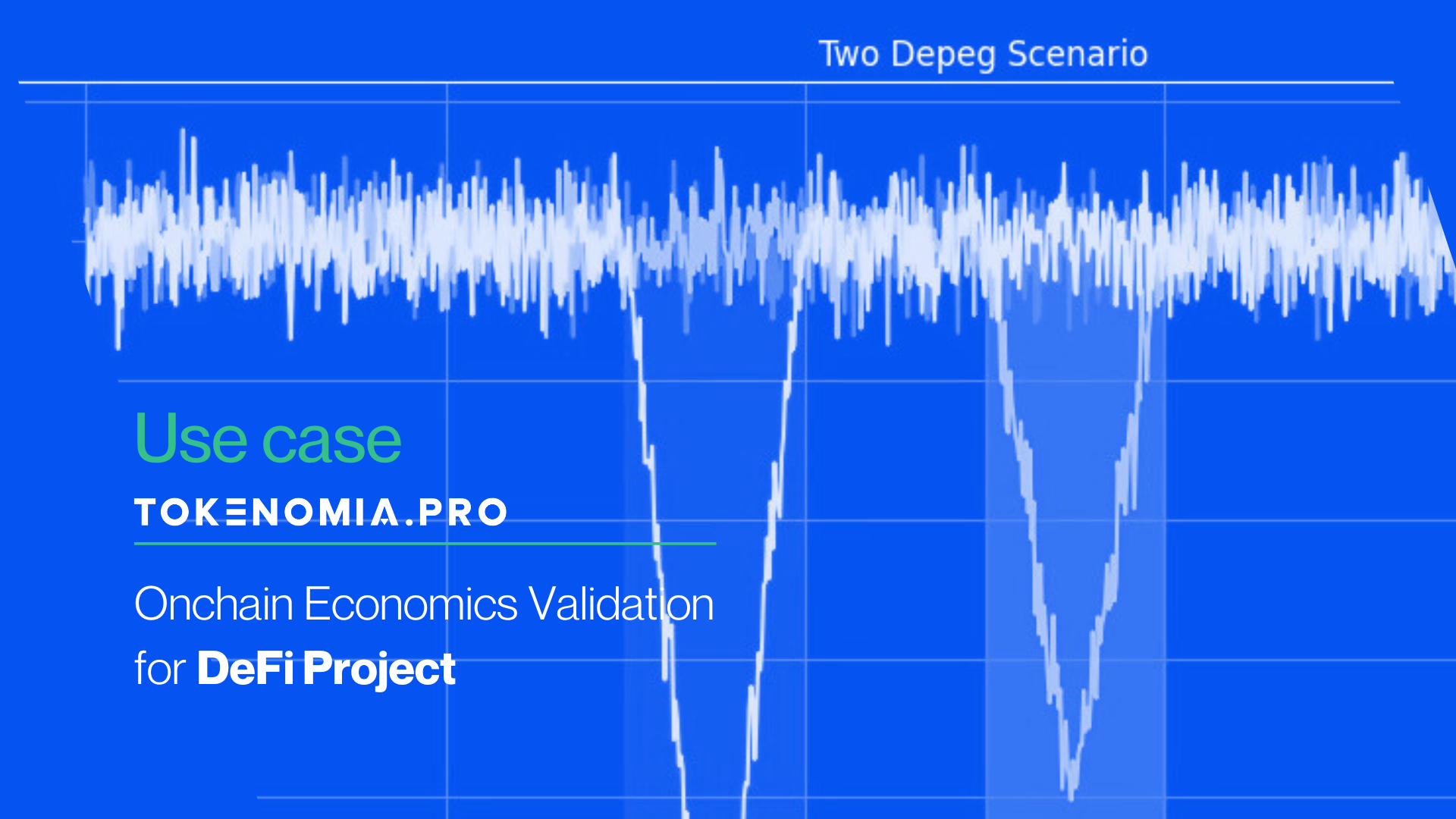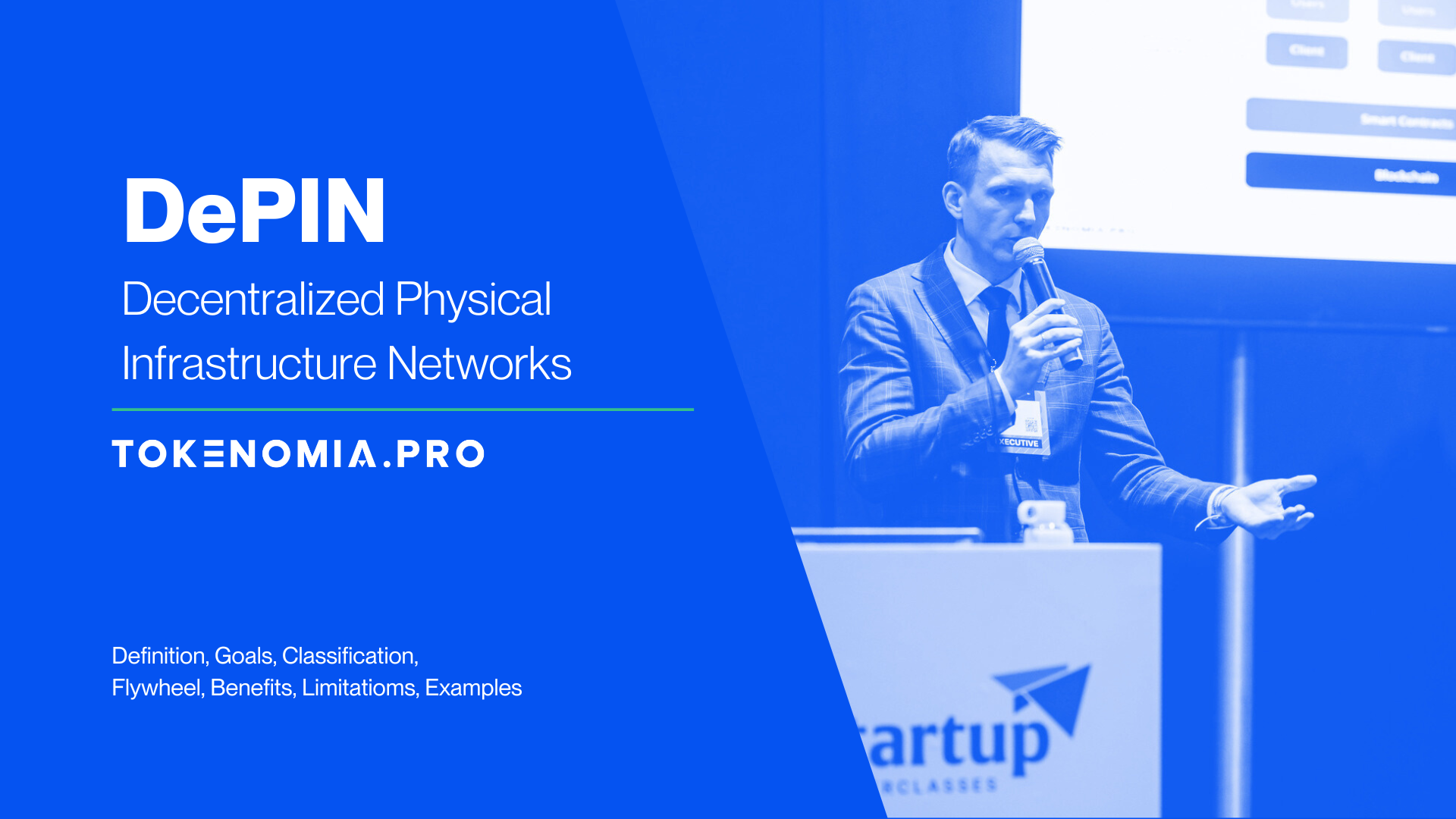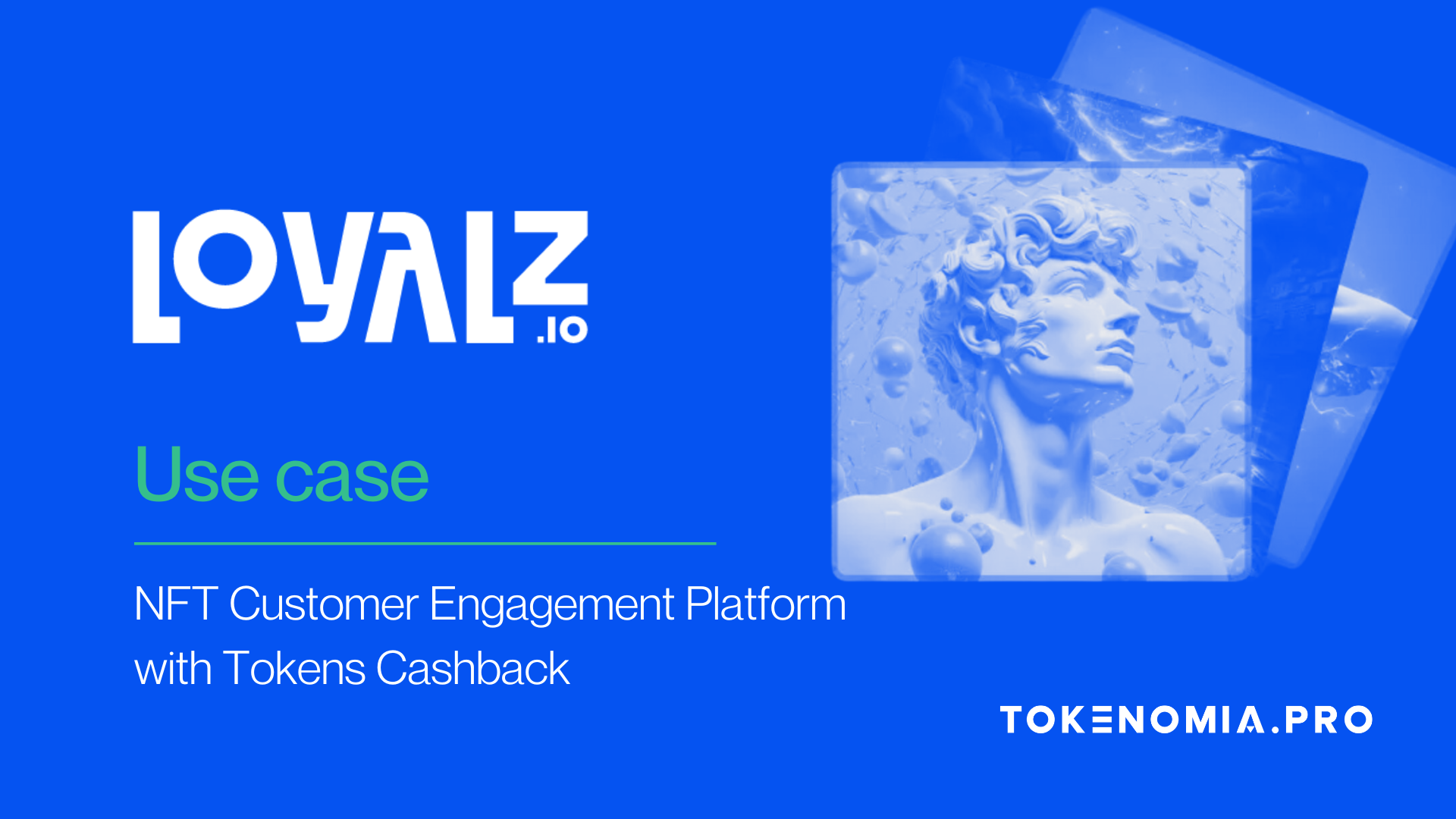 17 minutes read
17 minutes readTable of contents
GameFi Free-To-Play fusion of Trading Card Game & Board Game
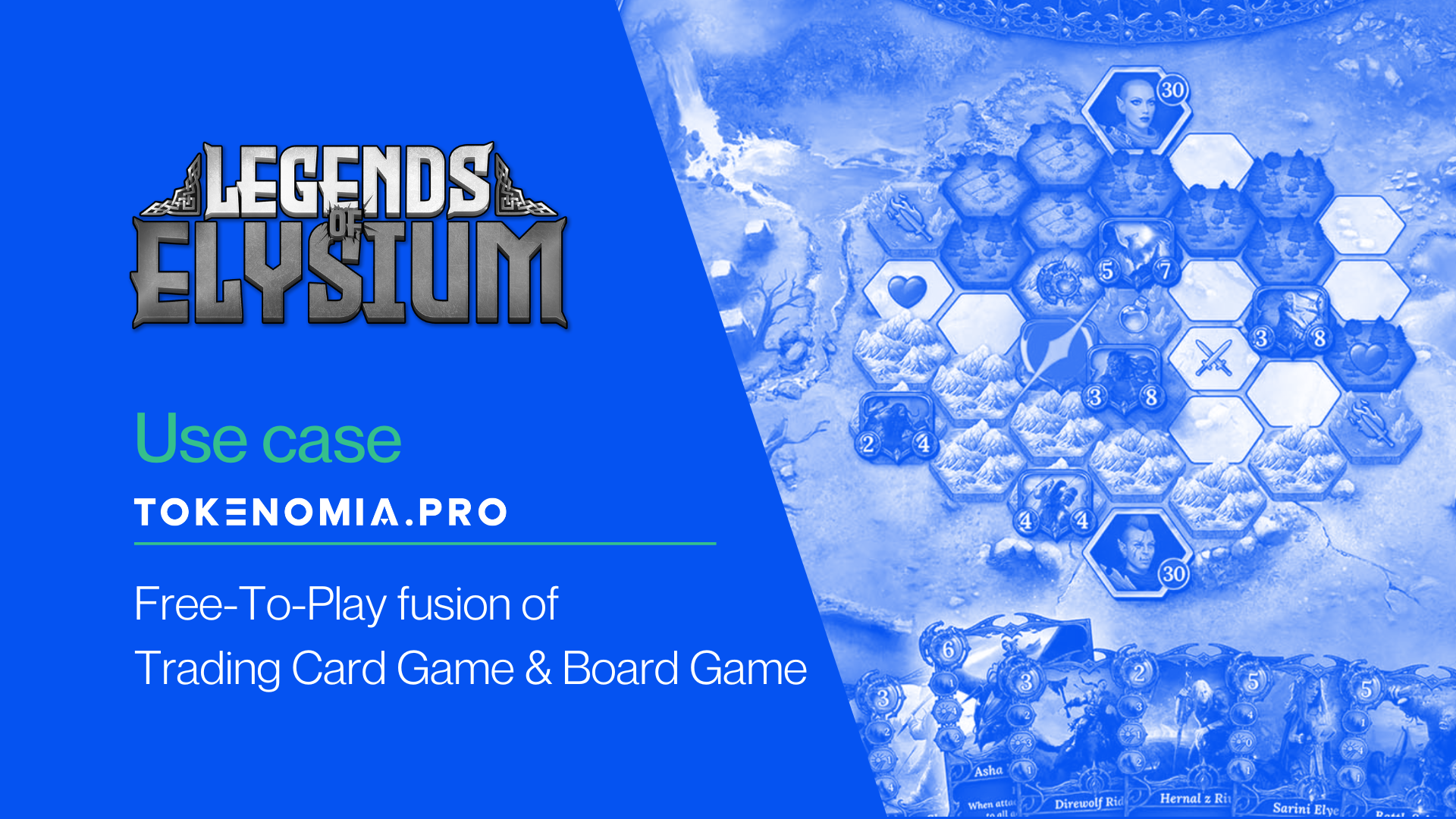
Who will enjoy this case?
This use case will interest people who want to incorporate crypto-economics into games or other entertainment platforms (GameFi). Web3 gaming is gaining popularity. There’s a growing demand for innovative approaches to merge gaming and blockchain technology. Their utility makes tokens attractive for entertainment integration. This ensures they are credible and transparent.
Who is our client, and what were his goals
Legends of Elysium is a Free-To-Play fusion of Trading Card Game & Board Game based on blockchain.
It merges classic card and board game experiences with NFT technology. Unique features like Play-And-Earn and weekly competitive battles grant players true asset ownership. The game offers entertainment and financial opportunities. It also introduces players to web3 and blockchain. Players can log in easily using familiar methods, receiving a private wallet automatically. Throughout the game, they explore wallet functionality. Users mint cards and learn about NFTs and the blockchain ecosystem.
The creators see potential for blockchain in the Game-Fi space. They aim to attract enthusiasts and educate players about crypto’s functionality through gameplay.
Problems and Solutions
Problem 1: Assessing the design integrity of system mechanisms to prevent potential disruptions.
Tokenomia.pro Solution: Drawing on our experience and expertise, we thoroughly examined all mechanisms. We conducted simulations and considered external and internal forces acting on the system.
Effect: We have identified certain mechanisms that may pose problems. For instance, the Board mechanism has an issue. The pool lacks enough LOE Tokens to meet obligations for their holders.

Conducted simulations led to a recommendation to revise the Boards’ profit distribution method. Currently, profits flow from the treasury to treasury pools. Then, they go to the Boards Rewards Pool:

We suggested, redirecting profits directly into the Boards Rewards Pool:

In that case, this revised flow arrangement would notably boost the proceeds directed to the Boards Rewards pool. It could increase the proceeds to as much as 29.7% from each board purchase.
Learn more about Crypto Economics Services: https://tokenomia.pro/blockchain-consulting-crypto-economics/
Problem 2: How will the system behave in different scenarios and cases? We need to have a full understanding of its components.
Tokenomia.pro Solution: We conducted simulations based on mathematical specifications, exploring over a thousand scenarios. The simulations considered various demand-supply forces and agent behaviors. They aimed to gain insights into the system’s behavior.
Effect: We discovered many mechanisms constrained by external or internal forces.
Examples include:
- The high availability of soft in-game currency can both positively and negatively affect demand for the LoE Token.

- The LOE Tokens Reward pool for stakers of NFT cards can be quickly depleted when the LOE Token’s price is low and the value of the staked cards is high.


- The ecosystem’s demand impacts the LOE Token price. This impact is driven by all in-game mechanisms. It increases proportionally with the number of players. Individual mechanisms in the system partially affect the LOE Token’s total demand.

Thanks to the accurate identification of threats, recommendations have been formulated. They will improve the functioning of individual mechanisms as well as the entire system.
Learn more about Risk Mitigation Services: https://tokenomia.pro/blockchain-consulting-risk-mitigation/
Problem 3: Insufficient insight into the system’s most critical vulnerabilities.
Tokenomia.pro Solution: To pinpoint the system’s vulnerabilities, we executed numerous simulations with diverse asset intensities.
Effect: The most critical vulnerability was the mechanism of selling LOE tokens by the team. In 76% of scenarios, the selling conditions for LOE Tokens by the team are not met, leading to an accumulation of LOE Tokens in the team’s hands.
An example of this was scenario number 1090:




The recommendation was to change the profit distribution based on the payment method. We recommend increasing the percentage allocated to the team from the profits of in-game assets sold for dollars. We also recommend decreasing the percentage from the sale of in-game assets with LOE Tokens.
Check how we can help you with your GameFi project: https://tokenomia.pro/blockchain-consulting/
Process Behind
We are using a proven process that consists of 3 main stages: System Discovery, System Model, and System Validation.

System Discovery: We deeply explore and understand every aspect of the system, carefully examining its needs and how each component connects and interacts. This process results in a detailed specification that not only guides the economic setup and token system design but also provides a clear roadmap for project leaders and advisors, outlining the goals, key components, functionality, and growth stages of the system.
System Model: We utilize advanced simulation tools to build a dynamic model based on the initial phase’s specifications, primarily using Python and the cadCAD/radCAD framework. This model allows us to simulate various scenarios, providing a foundation for crucial project decisions and ongoing adaptation, ensuring our strategies remain effective and responsive to the evolving environment.
System Validation: We validate initial assumptions of the project through comprehensive system analysis, encompassing simulations of user numbers, resource dynamics, and fluctuations in both cryptocurrency and traditional business elements. This phase involves rigorous testing in hundreds of scenarios to assess the system’s response to various internal and external forces, and to identify necessary modifications, ensuring the project’s adaptability to current and future needs, including secondary market behaviors and token issuance strategies.
System Discovery
The client brought well-thought-out game mechanics and token utility. They also proposed tokenomics, cliffs, vesting schedules, and filling pools. Tokenomia.pro main task was to systematize the provided information and ideas into a cohesive document. We also verified the correctness of the mechanisms and behaviors. The sensitivity of the entire system was checked as well. We did this by simulating various internal and external forces.
The client required us to perform the following actions:
- Systematize ideas.
- Conduct research to examine competitive solutions.
- Verify the logic and correctness of proposed mechanisms.
- Create mathematical specifications.
- Conduct system simulations using Monte Carlo methods and parameter sweep techniques.
- Assess how the system behaves under the influence of various external forces.
- Identify the most sensitive and resilient aspects of the system.
- Propose changes and recommendations based on simulation results.
After familiarizing ourselves with the client’s ideas and solutions in a series of meetings. Then, we created a project specification in the form of a Model Design Document. This document includes descriptions of all system mechanisms and relationships between components. It also describes agents, assets, forces interacting with the system, and mathematical specifications.
Mechanisms
In particular, a set of tokenomic mechanisms has been determined, including:

Our Token Engineers have thoroughly researched and analyzed each mechanism from economic, mathematical, and functional perspectives. They did this to ensure that each mechanism was consistent with the overall system. When listing proposed tokenomic mechanisms, it is important to emphasize that our professional analysis goes beyond simple identification. We ensure that even seemingly simple mechanisms undergo assessment for their role in the token ecosystem.
Agents
In our team’s work, we make sure to identify everyone involved in our project’s ecosystem. This includes leaders and key partners who guide and support us, contributors who add value through their efforts, users who benefit from our work, and other important stakeholders.

By understanding who these people are and how they interact with each other, we can better grasp the various behaviors and forces that affect our ecosystem. This thorough approach helps us make informed decisions and create strategies that consider everyone’s needs and contributions.
Assets
Based on the client’s vision and their system functionality ideas, we conducted simulations. We examined how assets are interconnected. We also looked at the dynamics they exhibit and the interactions they engage in. We ensured that no one disrupted the project’s proper functioning.
| Elytronite | Elytronite is an in-game soft currency which aims to use the game in a free-to-play model. It has no value in FIAT and cannot be sold. However, it allows you to buy some in-game assets. Its Total Supply is unlimited. |
| $LOE Token | The $LOE Token is central to the game’s digital economy. It is compliant with the ERC20 standard. It enables players to acquire in-game assets. It functions as a stable currency within the game. From an economic standpoint, it’s crucial to differentiate between tokens in circulation and those held by project founders. |
| Hero | In the game, heroes command units and deploy cards from the Deck to defeat opponents. The cards are stored as NFTs in wallets and can be traded. Players can level up their heroes through in-game experience and Elytronite or $LOE. |
| Pack of card | The Pack contains 5 cards. Card probabilities vary based on pack type: Standard, Enchanted, and Divine. Each pack is priced in dollars but quoted in LOE based on the previous day’s average price. |
| Cards | Cards are integral to the game. Each card has unique features for battle. Cards are categorized as Common, Rare, Epic, and Legendary. Ownership requires minting. It also enables trading within and outside the marketplace, regardless of gameplay use. |
| Board | The board is an exclusive item accessible only to dedicated players. It resembles a premium account, granting privileges. These include access to all whitelists. You also get daily rewards in LOE and Elytronite, as well as staking bonuses. |
Stock & Flow
Stock&Flow diagram is a graphical tool used to model and analyze dynamic systems. It consists of various elements such as Source, Drain, Stock, Flow and Relationship. The Stock&Flow diagram allows us to visualize the interactions between these elements.
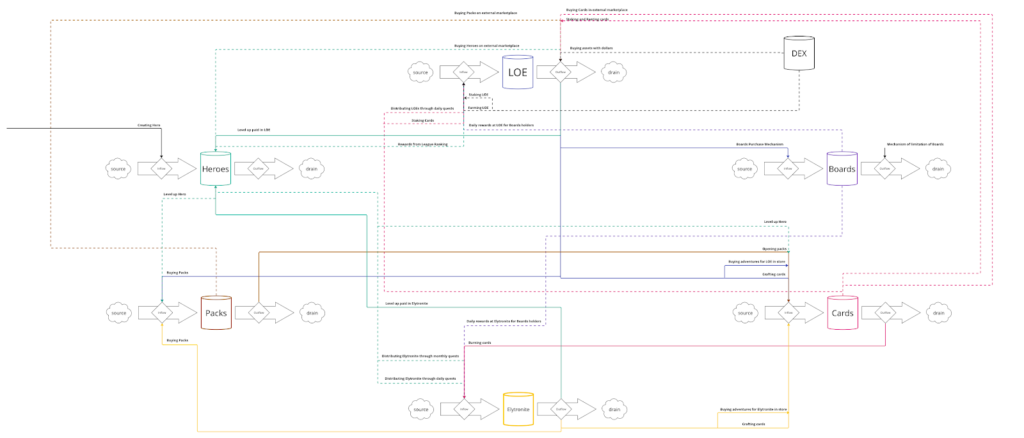
Understanding the system’s dynamics helps predict its behavior in different scenarios. This allows for cause-and-effect analysis. It also helps identify delays, excesses, and shortages. It evaluates the impact of changes in the system.
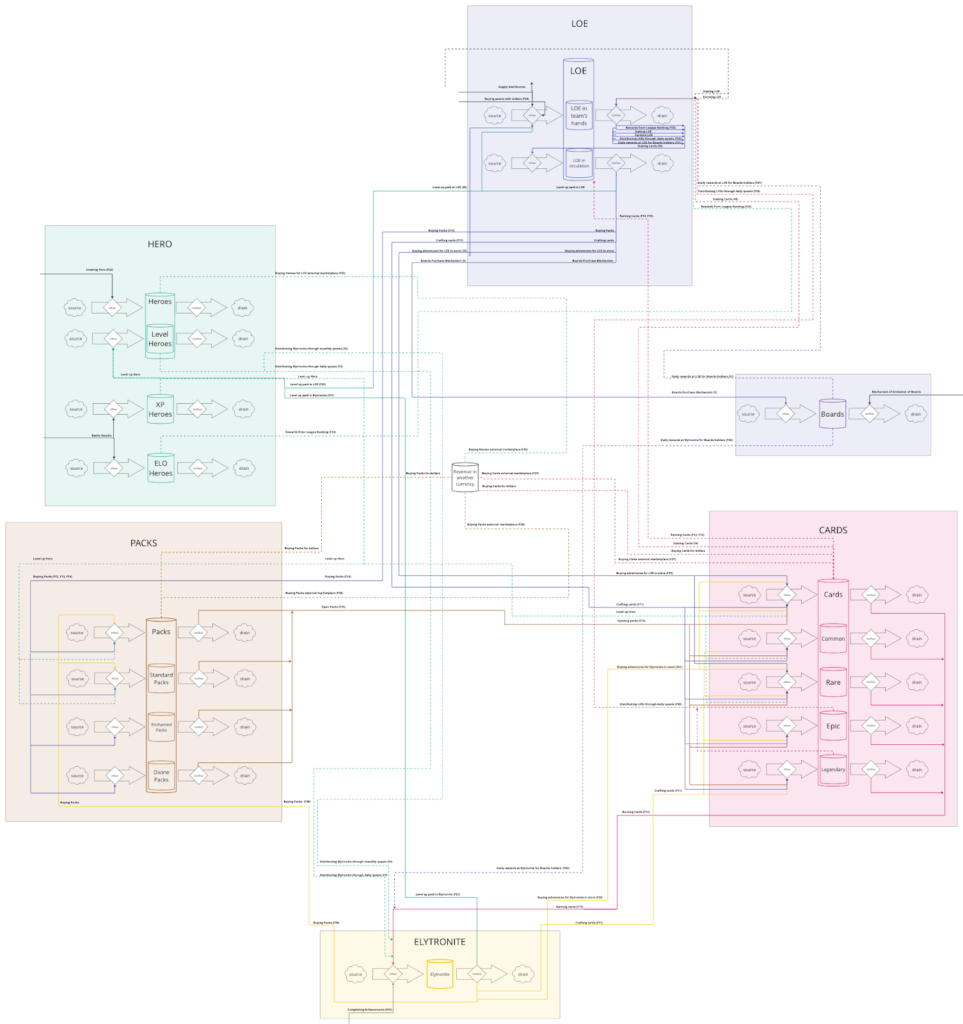
Mathematical specification
Below is an example of fragment of a mathematical specification provided by Tokenomia.pro. It describing a part of the ‚Rewards from League Ranking’ mechanism:
[…]
Formula 33: Total rewards for Ranking in $LOE tokens.
where
R_winners% is a parameter that determines what percentage of the top players get a prize in the League,
TotalRRewards(t) is the number of $LOE tokens paid out to top 10% WAU at the time t,
RMaxReward(t) is the maximum possible reward for ranking at time t,Rpool(t) is the number of $LOE tokens in the ranking pool at time t. […]
System Model
After completing the project phase, we developed a digital twin of the system.. The digital twin is a comprehensive digital reflection of the entire system.
Machinations
The next phase involved creating a high-level simulation using Machinations. During this step, we developed over 80 interactive mechanisms. Each mechanism is intricately connected with others. This simulation lets us adjust parameter values for each mechanism. It offered a comprehensive view of their functionality. Through this process, we were able to examine the system’s operations.
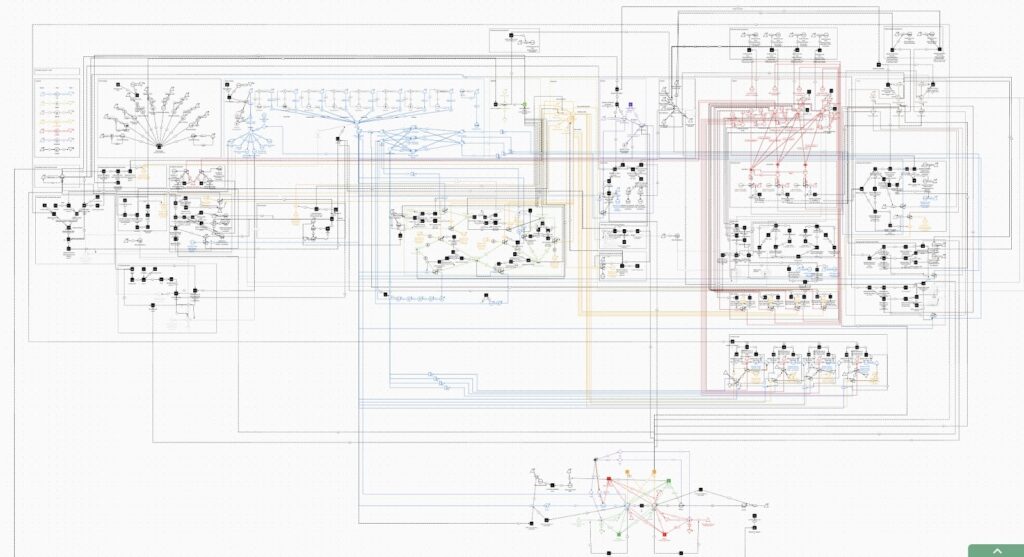
Analysing the forces and dynamics of individual mechanisms was essential. It helped us gain a deeper understanding of the system. The insights garnered from the simulation illuminated key aspects of its functioning. Accompanying charts helped clarify these insights.
CadCAD/RadCAD
This is an example of a graphical differential specification. It describes part of the mechanisms connected to ‚Packs’:
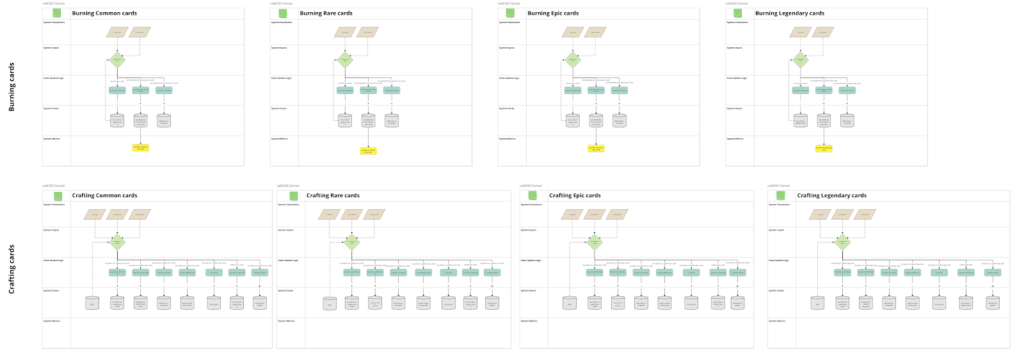
In form of code in cadCAD, the model looks like this:
System Validation
This part of the process was crucial for the project. The client provided the overall system concept. Our task was to ensure its proper functioning. We also assessed the impact of external market forces on its stability. Simulations of more than a thousand scenarios were conducted to achieve this.
These simulations provided a wealth of data in the form of multi-level charts. In the final phase, we analyzed the validated assumptions. This allowed us to propose a series of recommendations. Implementing these recommendations will result in the most optimized and beneficial system.
In collaboration with Legends of Elysium, we conducted two independent analyses:
- Monte Carlo Simulation Analysis.
- Parameters Sweep Analysis.
Charts
Thousands of simulation scenarios were analyzed. To simplify results and their analysis, graphs were created.
Graphs focused on a single variable:

Graphs combine results from multiple scenarios for a single variable into a general relationship:


Graphs comparing multiple values:




The graphs show value ranges. They were caused by using a Monte Carlo method, which aimed to introduce randomness into the simulation:

Listing hundreds of different values depending on scenarios, a fragment:

Conclusion
We successfully understood the client’s vision and embraced their proposed solutions and ideas. This effectively streamlined the entire project scope. We used our expertise to turn insights into a detailed mathematical specification.
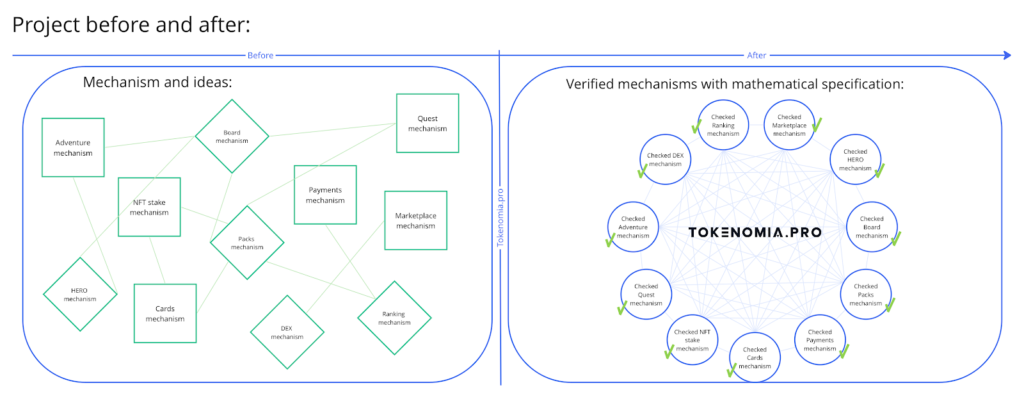
This helped create many simulation scenarios. Precisely emulating the system within the simulation was pivotal. It helped gain comprehensive insights into its operation. This simulation was a crucial tool. It helped uncover flaws and oversights in the initial assumptions. By addressing these discovered errors, we safeguarded both creators and users of the game. This protected them from potential loss of time and resources. Furthermore, identifying the most critical assets in the system empowered us. It allowed us to tailor our marketing strategy and refine mechanisms. This gave the project a chance for long-term success.
Conducting simulations allowed for identifying errors in the system and its various mechanisms:
- Fairly distribute LOE Tokens among team members to maintain team morale and equity.
- Ensure a consistent supply of Elytronite. This will support the LOE Token’s circulation and stability.
- Keep enough liquidity in the Boards mechanism pool for smooth trading operations.
- Maintain liquidity in the rewards pool for NFT card stakers. This will mitigate risks from token price fluctuations and changes in card values.
- Explore both extreme scenarios (100% supply, zero demand) and optimistic scenarios. This helps understand potential risks and opportunities.
- Study how different mechanisms interact with agents. Grasp their impact on the ecosystem.
- Investigate how variable changes, like cliff length or TGE level, affect mechanism operation and token value. This will help optimize the system.
Proposing these corrections in the system would certainly be difficult without conducting a full simulation. Failure to diagnose these errors could have serious long-term consequences on the system’s operation and the game itself.
Client Opinion
“Tokenomia.pro provided us with comprehensive support. They deeply understood our system and meticulously documented all mechanisms and assets. This gave us a comprehensive view of our project. They used Machinations and cadCAD to run iterative simulations. These simulations delivered invaluable insights. They enabled visualization and analysis of over 100 scenarios. This confirmed the robustness of our system. All project stages were completed on time. The team was always open to our suggestions, resulting in quick adaptation to our needs. Tokenomia.pro, as official Token Engineering Educators, demonstrated unparalleled knowledge in token engineering processes. This knowledge proved invaluable throughout the project. Lastly, the company delivered exceptional value. They offered attractive pricing and dynamic work with an experienced team. This left us fully satisfied with their services.”
Eryk Rutkowski, CTO Legends of Elysium
Let’s talk about GameFi
The best first step is to talk to our consultant. During a free consultation, you can check the consultant’s competences and look for initial solutions to the challenge that is currently most important for your project.
Let's Collaborate
Whether you have questions, collaboration ideas, or just want to say hello, we're here and ready to connect. Your inquiries are important to us, and we look forward to engaging in meaningful conversations.
